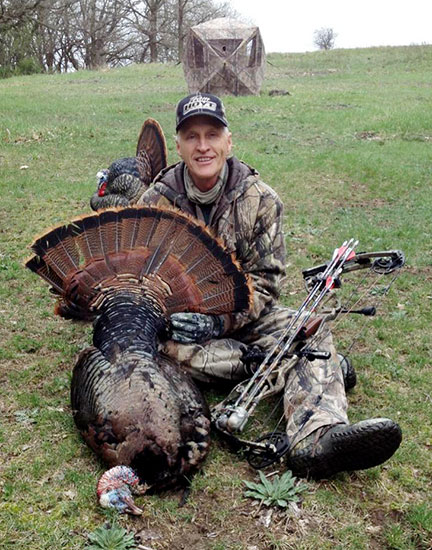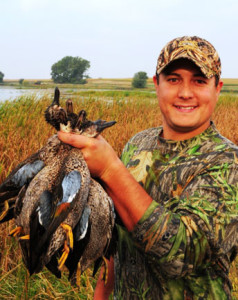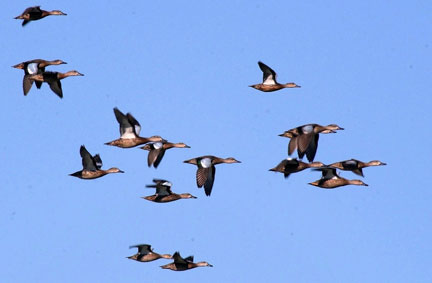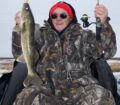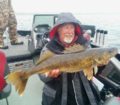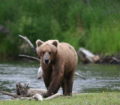By Steve Weisman
It’s hard to believe that it is already August, and the first waterfowl season is just about here. This will be the second of a three-year experimental TEAL-ONLY 16-day season. If it corresponds to last year, this year’s season will run Saturday, September 5-20.
Primary reason for the special early teal season is that teal, especially blue winged teal migrate so early that hunters in the Hawkeye state, along with the other production states of Minnesota, Michigan and Wisconsin, rarely got a chance to harvest any of these birds during the regular duck hunting season.
As a result, these four states were given the option of participating in this special experimental three-year TEAL-ONLY season.
Looking back at 2014
Going back to the first year, for these production states to be part of early this season, each state was required to collect data on hunter performance and harvest. First off, each state had to get the word out to potential duck hunters and explain the experimental status, data collection procedures and provide duck identification tools. This last one was going to be the tricky one. Could the DNR help hunters identify teal, especially when there would be other ducks using the same sloughs and waters.
One of the first regulations enacted was to move the morning shooting hour to sunrise instead of ½ hour before. Although this ½ is a key shooting time during the regular season, it is much more difficult to identify ducks during this low light period. Orrin Jones, Iowa DNR Waterfowl Research Biologist headquartered in Clear Lake, says, “The half hour does make a difference. If hunters can have the sun to their back, it helps make waterfowl identification much easier. We also believe that by moving the shooting time back to sunrise, we reduce the risk to wood ducks, because they normally begin flying well before sunrise.”
States conducted hunter performance surveys of hunting parties hunting during the
September teal season. According to Iowa DNR officials, moving the morning shooting time to sunrise had a positive impact on fewer non-teal shot.
Other information collected during the hunter performance surveys was species targeted, number of birds in each flock, whether the flock was shot at, and the number of birds hit. From these observations, a non-target attempt rate was estimated based on non-target duck flocks observed during legal shooting hours and determined by the observers to be in range; the non-target attempt rate is the ratio of flocks shot at one or more times to the total number of non-target flocks. The non-target kill rate was estimated as the ratio of non-target ducks that fell directly or sailed after being shot at to the total number of ducks (teal plus non-target ducks) that fell directly or sailed after being shot.
Results of the surveys
September 2014 was the first year of what is intended to be a 3-year experiment. The first year’s experimental effort was highly successful.
A total of 88 trained observers conducted hunter performance surveys (resulting in 160 hunting parties observed (72 parties in Iowa, 44 parties in Michigan, and 44 parties in Wisconsin).
Across the three states, a total of 699 non-target flocks came within range of hunting parties during legal shooting hours. A total of 44 flocks were shot at resulting in a non-target attempt rate of 6.3 percent. A total of 368 ducks were observed killed (birds that fell directly or glided before falling), 18 of which were species other than teal, resulting in a non-target kill rate of 4.9 percent. The U. S. Fish and Wildlife Service (USFWS) finds that these percentages are all within the acceptable range of hunter performance.
Jones believes that Iowa hunters worked hard at making correct duck identification. “One thing we observed was that hunter duck identification improved as the season progressed. Most of the issues that did occur were primarily on the first weekend.”
Data collection this year (year two)
Since hunter performance during the first year was well within the criteria established by the USFWS for both non-target attempt rates and non-target kill, Iowa will now move into its second year. The states will continue their education efforts to inform hunters of the additional regulations and help improve their species identification skills. Since 2014 was the first time many hunters had the opportunity to participate in a September teal season, officials believe that it is reasonable to expect that hunter performance will improve as hunters gain experience with the season. Given these first-year results, it is likely that desired sample sizes and performance criteria will be attained during the second year of this experiment.
Let’s get ready
Jones notes that water conditions appear similar to 2014. However, scouting will be important for this early teal season. Most of the migrating blue-winged teal relate to shallow water, mud flats and smaller wetlands, especially those with heavy vegetation. A quick inch of rain can create a shallow water teal mecca, which if they are on the move, will entice migrating teal.
They love the seeds and gorge on them to prepare for their next push south. Even the slightest cooler weather will create a move, and teal will move out of and into an area overnight. So, hunters might find nothing in the area for a few days, and suddenly on a given morning the air will be filled with flocks of low flying, slipping, sliding teal. Unlike mallards, teal will zip in and out, often times buzzing hunters right over the cover from behind! Nothing ever seems to be an in-your-face incoming shot. Just when you think you have the bead on them, they will dip down, bank to the left or right or climb straight up. Very seldom is there a simple straight on shot. Of course, that’s what makes the season so inviting!
As for equipment, it will be relatively simple with only a few decoys needed. Most hunters will likely use some of their mallard decoys. Best bet is to go with mostly hen decoys, because the blue-winged teal drakes will not be in full plumage yet. Of course, some hunters will use teal decoys to make the spread as realistic as possible.
The daily bag limit will be six teal in any combination. The three species of teal include blue winged teal, American green winged teal and the cinnamon teal. Of course, most of the bagged birds will be the blue winged teal.

